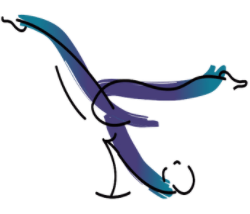7 Great Benefits of Pilates for Seniors
For the older population keeping fit is essential, but it can be hard on the bodies of older adults to stay in shape. The goal of Pilates is to reduce the risk of injury that weight-bearing exercises might cause and Pilates focuses on controlled breathing, quality of movement-not quantity of repetitions.
Pilates focuses on building a strong “core”– many of the exercises are performed in reclining or sitting positions, and most are low impact and partially weight-bearing. It also can positively affect postural positions.
1. Increased Stability and Balance control and stability in a small range of motion, graduating to a larger range of motion as they gain control and confidence
2. An Antidote for Many Ailments
Arthritis sufferers benefit because the gentle mid-range movements decrease the chance of joints compressing while maintaining the range of motion
For osteoporosis the simple and standing Pilates leg exercises may increase bone density in both the spine and the hip.
Pilates has also been documented to slow or reverse the effects of debilitating diseases like Parkinson’s and multiple sclerosis.
The mid-range motion of the exercises can help people overcome rigidity and become more limber.
It can even help with brain traumas like a stroke.
3. Osteoporosis
Osteoporosis is a special concern for seniors in Pilates, as it is with many fitness systems. Osteoporosis is a weakening of the structure of the bone, which makes those who have it more susceptible to broken bones and fractures. An
Weight bearing exercises, such as many Pilates exercises, are often recommended as part of bone building programs to prevent osteoporosis. However, once the condition is present in the bones, the fitness scenario changes considerably. The reason is that exceptional balance challenges, some weight bearing exercises, forward flexion (bending), and certain twisting exercises — all part of regular Pilates practice — are not recommended for people with osteoporosis. Does that mean they can’t do Pilates? No. It does mean, however, that the workout has to be designed keeping osteoporosis in mind and should be lead by a qualified Pilates instructor.
Modified Pilates’ exercise is an ideal approach for a more senior client as it addresses the important issues regarding the changes in the body that come with age. Additional benefits include performing daily tasks with ease to improve quality of life and confidence.
4. Improved posture, joint stability and mobility
As we grow older our posture changes; we become more rounded and in most extreme cases a person may become stooped. Rounded posture will change the shape of the spine compressing the joints and may cause impingement at the shoulder joint resulting in problems when lifting the arms. Reaching up for items in cupboards becomes harder and may lead to falls. Most falls are as a result of reaching up. Pilates’ exercises will address these issues by improving posture and shoulder mobility.
5. Improved breathing and circulation
As we become more rounded with age, breathing will become more laboured. Muscles responsible for breathing become weak and the ribs become stiff. The result will be a lack of oxygen in the blood circulating around the body which can contribute to dizziness and even confusion. The specific Pilates’ breathing technique lengthens the tight ribcage and strengthens the muscles responsible for breathing resulting in a more efficient respiratory system.
6. Improved balance and body awareness
Falls are common among older adults and often lead to injury. Walking is a basic requirement for mobility and older people may lose their confidence if they have experienced a fall due to loss of balance or control. We rely on our senses to stand still and move; these senses deteriorate as we become older affecting our balance and mobility. Many falls are preventable and Pilates may help to reduce them by improving balance and co-ordination.
7. Improved strength and flexibility
With age, muscular strength decreases especially in the lower body and between the ages of 30-50 muscle strength has been shown to reduce as much as 30%. Physical inactivity will contribute to muscle loss which, in turn, leads to decreased muscular endurance resulting in early fatigue and an increased risk of falling. Loss of muscle power affects the older adult’s ability to walk, climb stairs and lift themselves out of a chair. Flexibility also deteriorates with age. Pilates’ exercises will address these issues and improve the body’s muscular balance.


